Can I connect any of my devices to a soundbar or do I need to worry about compatibility issues?
Soundbars provide pretty universal connectivity when you utilize the right inputs.
Let’s dive in to see how optical, HDMI ARC and wireless Bluetooth facilitate broad compatibility.
Soundbars Can Provide Universal Device Connectivity
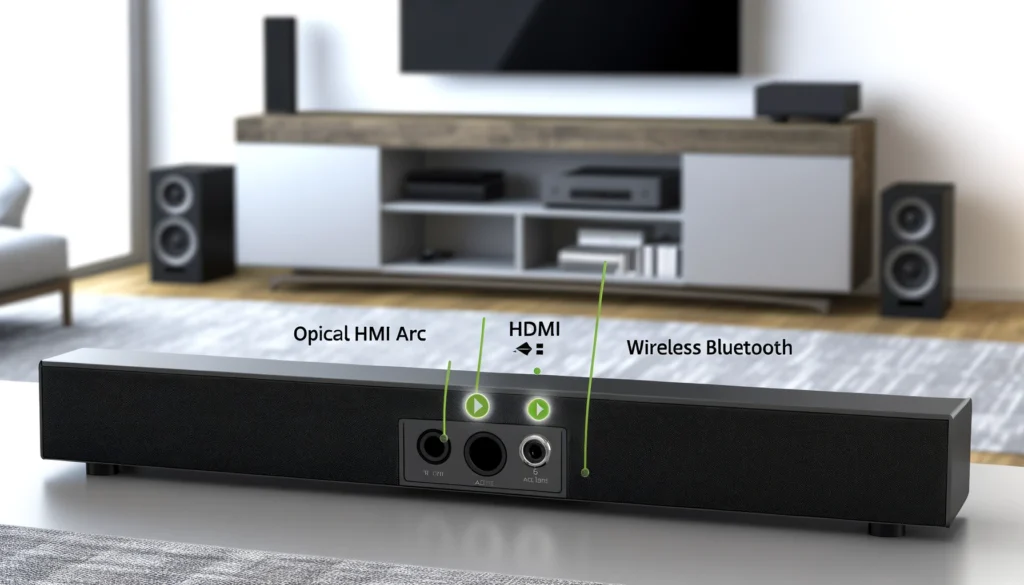
In short – modern soundbars largely offer universal connectivity thanks to retained support for widely compatible standards like optical audio and Bluetooth music streaming across models.
We will explore how leveraging these essential inputs grants broad compatibility between soundbars and TVs, mobile devices, computers and more for interoperable audio playback throughout the home.
Soundbar Connectivity
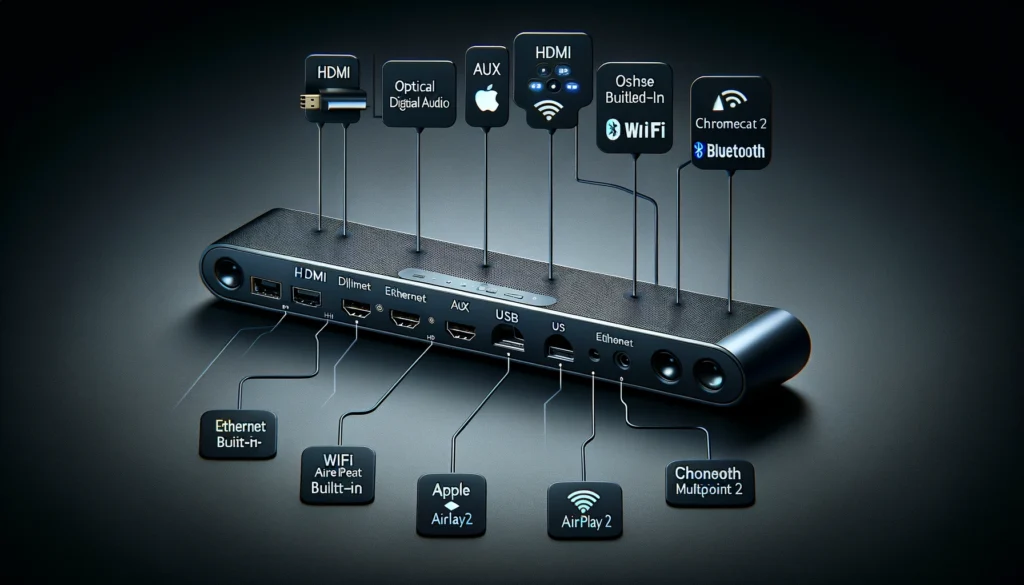
Modern soundbars integrate various wired inputs and wireless connectivity to stream audio from TVs, mobile devices, computers, and media players.
Standard ports found on most soundbars models include HDMI, optical digital audio, AUX, USB, Ethernet, and Bluetooth.
Flagship soundbars add more advanced options like HDMI eARC, WiFi, Chromecast built-in, Apple Airplay 2, and Bluetooth multipoint.
The assortment of soundbar connectivity enables broad compatibility to route video and music sources into the speaker for audio playback. But seamless universal usage relies on support for certain key protocols.
By packaging multiple inputs, soundbars aim for diverse device support right out of the box. However, home theater integration introducing newer specifications like object-based surround sound has complicated universal compatibility lately.
Still, the essential inputs retained on contemporary soundbars along with wireless streaming ensure widespread usage remains achievable across your household ecosystem.
Universal Compatibility

A “universal” soundbar defines a speaker that connects and interfaces effortlessly with any audio source hardware.
Universal soundbar compatibility hinges on widely supported connection standards that receive signals then process and output audio without needing specialized proprietary integrations.
Essentially, you can connect universal soundbars to common devices like TVs, tablets, and phones from any brand and enjoy seamless interoperability complete with remote functions.
Two fundamental wired audio connection methods enable universal soundbar usage – optical digital audio and HDMI ARC. When combined with wireless Bluetooth music streaming, this trifecta of input support grants broad compatibility.
Alternatives like WiFi streaming, HDMI eARC, and AUX analog offer additional options but rely on more specific requirements. Evaluating soundbar universality means analyzing how restriction-free core connectivity allows wide-ranging device support.
Optical Audio Connectivity
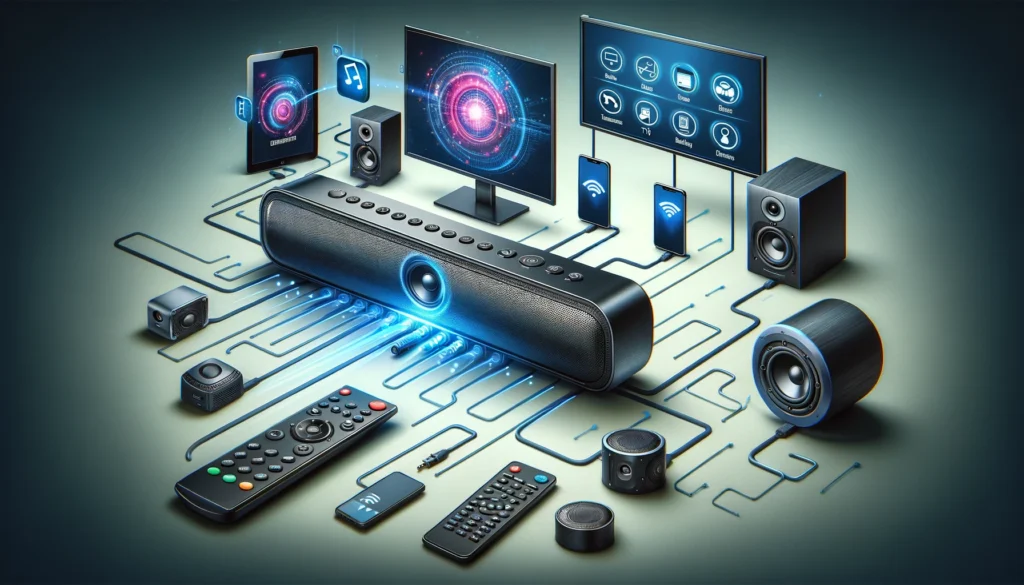
Optical digital audio ports utilize TOSLINK cables to transmit uncompressed two-channel PCM signals. This basic standard provides universal soundbar compatibility for any television with a matching optical output.
Audio signals from a TV’s built-in tuner or streaming apps route directly to the soundbar over optical without needing HDMI. Since optical cables are input-agnostic and every TV still supports two-channel audio, optical connections enable universal soundbar setup.
However, optical audio does face limitations sonically from older specifications. Two-channel PCM transmission lacks codec support for recent object-based surround formats like Dolby Atmos which require HDMI pathways.
And lower bandwidth can bottleneck higher resolution audio. Still for listeners focused just on boosting TV speaker sound for news or sitcoms, optical inputs offer guaranteed universal support from any tube or panel.
For wider home cinema applications though, optical acts as just a baseline universal soundbar connector.
HDMI ARC & eARC Connectivity
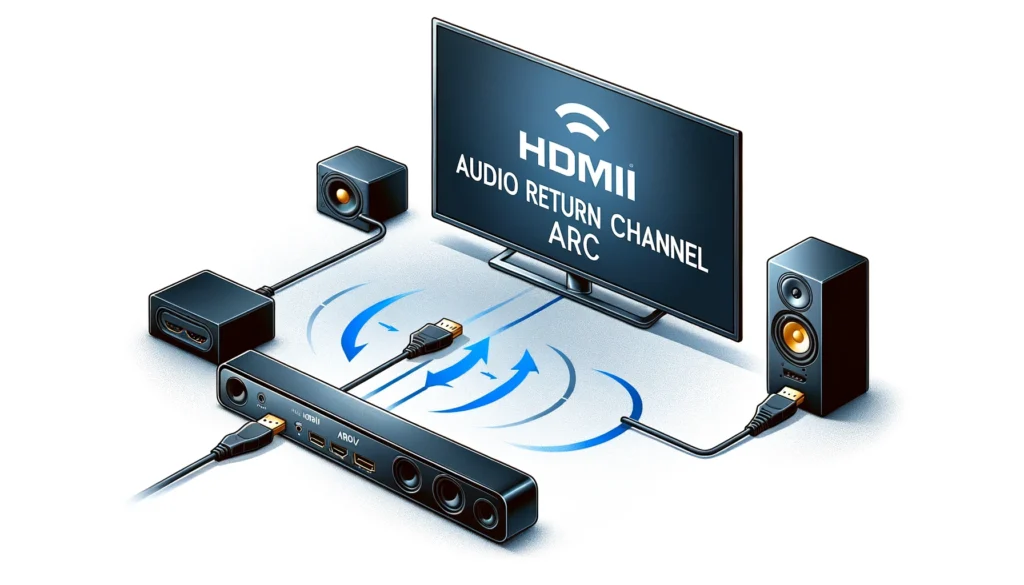
HDMI Audio Return Channel forms the home theater standard for connecting external speakers like soundbars to modern televisions.
The ARC functionality permits audio transmission from TV output to external devices bidirectional over a single HDMI cable. This allows TV audio to playback directly through the attached soundbar universally through a single port without separate audio cabling.
Providing full surround sound support, HDMI ARC offers universal TV-to-soundbar consolidation for home theater listeners. However compatibility depends on both devices featuring the ARC specification over HDMI.
Most new TVs include ARC capability while many older sets need dual cables. Enhanced eARC improves bandwidth for object formats.
When available, HDMI ARC/eARC delivers premium universal soundbar interoperability from a TV source thanks to widespread adoption. But standalone stereo playback uses still benefit from optical as an alternate input.
Bluetooth & WiFi Wireless Streaming
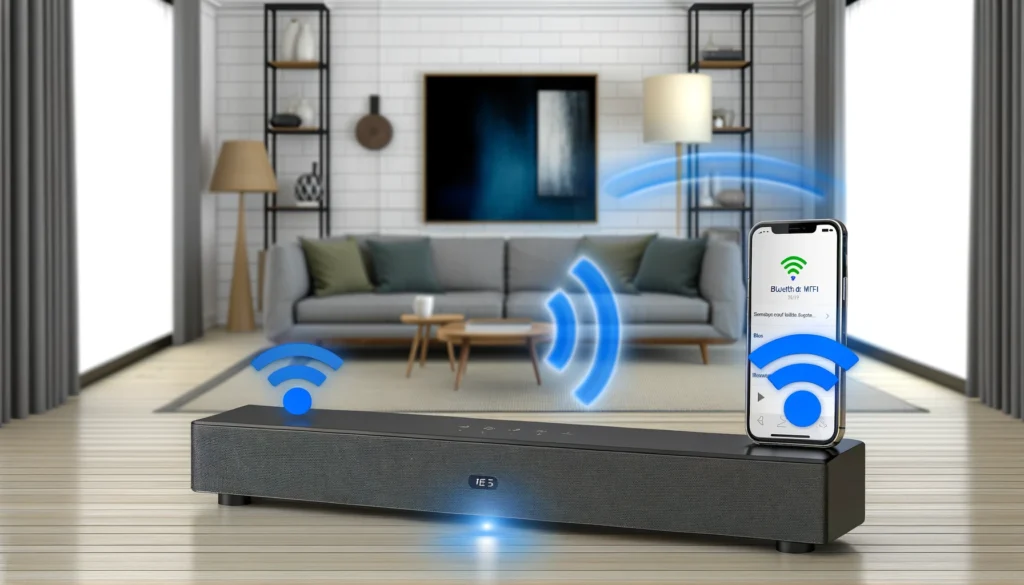
Alongside wired hooks-ups, integrated Bluetooth gives soundbars nearly universal wireless connectivity for music and audio from mobile devices like smartphones and tablets.
Once paired, the soundbar appears as an output option for system-wide audio allowing unified playback. Leading brands also include support for streaming protocols like Google Chromecast or Apple AirPlay 2 to extend multiroom capabilities.
Bluetooth and WiFi thereby provide universal wireless soundbar connectivity for mobile devices and casting music apps. But music playback range and quality can suffer versus wired sources.
Playback also depends on external device compatibility rather than assured universal soundbar support. Still the convenience of wire-free universal streaming from mobiles or cloud services keeps wireless connectivity a key soundbar feature despite quirks.
Universal Remote Controls
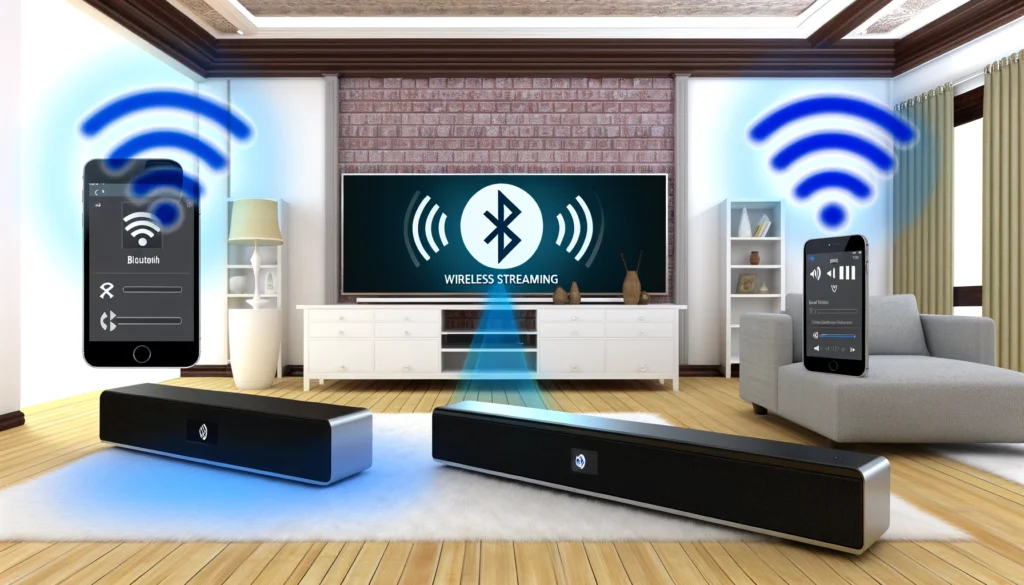
Simplifying home theater command, most major soundbar manufacturers offer universal remote options combining TV and speaker control into one device. Brand-specific models like the Bose Soundbar Universal Remote or Sonos Ray Remote cover power, volume, playback, and settings adjustments for both television and audio over infrared, Bluetooth, or WiFi depending on complexity. Some third-party programmable models also support select components.
While handy, native soundbar remotes tied to specific brands do not quite offer truly universal centralized control. But new HDMI-CEC functionality is helping progress towards compatibility through features like Audio Return Channel Volume Control and System Audio Control. With maturity, standardized command protocols could soon grant remotes better universal soundbar management capabilities. For now, niche remote options provide helpful if limited control unification.
Making Universal Connections
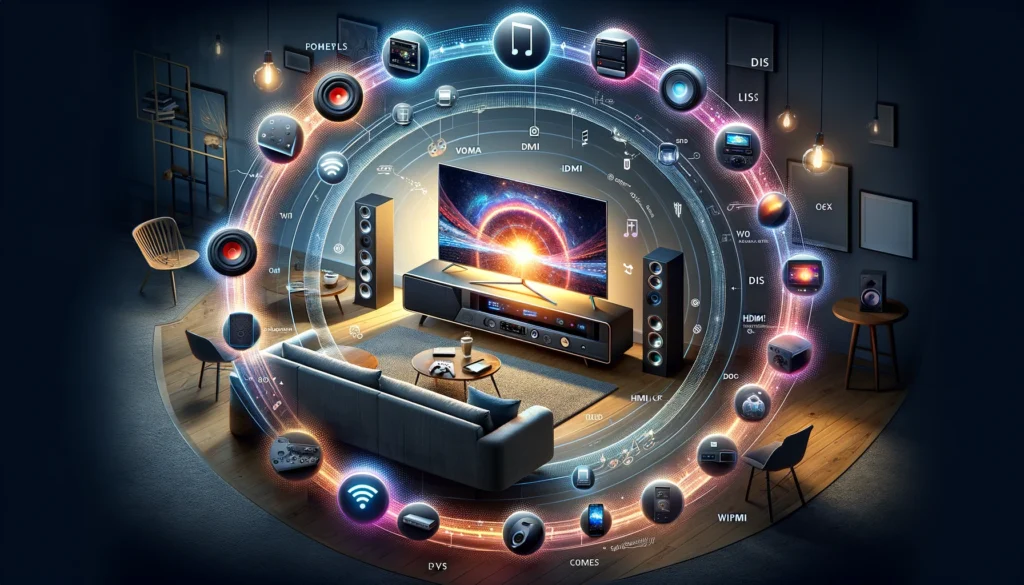
Achieving universal household connectivity hinges on integrating the most widely compatible soundbar inputs like optical audio and HDMI ARC with contemporary wireless streaming.
Combining these common ports grants the most flexibility for interoperating TVs, disc players, consoles, phones, tablets, and computers from any vendor.
Additional capabilities like HDMI eARC, WiFi surround channels, voice assistants broaden usage freedom albeit with more prerequisites.
But even limittingusage to just TV optical connections and mobile Bluetooth already offers satisfying universal soundbar integration for many buyers. Expanding to advanced specifications later remains optional.
Of course users still need to apply best practices for linkages like properly configuring audio output settings and ideal input selection for flawless connectivity. Paying attention to setup details ensures quick success achieving universal audio playback.
Conclusion
In conclusion, soundbars largely offer universal connectivity thanks to retained support for widely compatible standards like optical audio and Bluetooth music streaming.
While full home cinema integration depends on more advanced specifications, focusing on the essential inputs grants broad compatibility with old and new TVs, phones, tablets, and computers alike.
Prioritizing optical links first then expanding to HDMI ARC or wireless casting enables universal usage for nearly all households.
